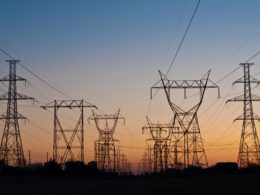Continuing its bombing campaign against Ukraine's power grid, Russia has conducted another series of nighttime air strikes, damaging critical energy infrastructure across the country.
Overnight on 9 April, Russian forces attacked several regions of Ukraine with 20 Shahed-131/136 one-way attack drones. The Ukrainian air defenders managed to shoot down all of them, said Mykola Oleshchuk, commander of the Air Force of the Armed Forces of Ukraine. No casualties specifically linked to the Russian air attack have been reported.
Russia conducted its first campaign against Ukraine's energy infrastructure from the fall of 2022 through the winter and into the spring of 2023, resulting in widespread blackouts across multiple regions, sometimes lasting for several days. Ukraine was concerned that Russia might launch a similar campaign during the 2023-2024 winter period, but it appears Russia postponed it to spring, possibly due to insufficient missile stockpiles.
According to Ukraine's Ministry of Energy, the April 9 strikes hit two high-voltage substations - one in Poltava Oblast and another in Lviv Oblast. In Poltava, a fire broke out at the substation, which was quickly extinguished by emergency services, while the Lviv substation also suffered equipment damage.
Despite the attacks, Ukraine has managed to maintain a stable electricity supply overall, according to the Ministry, which reported that warm weather conditions have helped offset any potential deficits in the power grid.
However, the situation was reportedly more complicated in Dnipropetrovsk Oblast, where two high-voltage transmission lines were simultaneously disconnected, temporarily leaving an industrial facility without power. This outage was eventually resolved.
To supplement its own generation, Ukraine has had to resort to importing electricity from neighboring countries like Poland, Romania, and Slovakia during periods of peak demand. On 8 April, the country even exported a surplus of 699 MWh to Poland.
"Altogether, thanks to the warm and sunny weather in Ukraine, there is currently no shortage of electricity," the Ministry statement reads.
- Russia has intensified attacks on Ukraine's energy system since March 2024.
- A massive air assault occurred on 22 March, Russia attacked Ukraine with 63 kamikaze drones and 88 various types of missiles, with air defense managing to shoot down 55 Shahed drones and 37 missiles. This was called the largest attack on Ukraine's energy system during the war by Volodymyr Kudrytskyi, head of NEC "Ukrenergo."
- Another significant attack occurred on 29 March, with 60 Shahed drones and 39 missiles used by Russia; air defense successfully downed 58 drones and 26 missiles. Following the attack, Ukraine's power grid operator Ukrenergo stated that the power grid remains stable despite damage to thermal and hydroelectric facilities, resulting in limited electricity consumption in the Kryvyi Rih area.
- Smaller-scale strikes, using missiles and explosive drones, occur every day.
- The attacks destroyed the Dnipro Hydroelectric Power Plant in Zaporizhzhia - its operating company stated that its restoration is expected to take years, with the machine hall destroyed and some equipment needing to be manufactured from scratch., Kharkiv Thermoelectric Power Plant-5, Zmiiv Thermal Power Plant of Centrenergo, and DTEK's Burshtyn and Ladyzhyn Thermal Power Plants.
- On 6 April, Ukrenergo CEO Volodymyr Kudrytskyi revealed that to protect Ukraine's energy system from the severe consequences of Russian attacks, the strategy is to decentralize electricity production by building hundreds of small power plants throughout the country.
- On 8 April, Ukraine's Energy Minister said that Russia damaged 80% of Ukraine's non-nuclear power plants, including half its hydroelectric ones, and multiple substations over recent weeks.
Read also:
- Energy Minister: Russia damaged 80% of Ukraine’s thermal power plants, half of hydroelectric ones
- Russia targets more power plants as Ukraine downs 58/60 explosive drones, 26/39 missiles
- During the week, Russia fired about 190 missiles, 140 Shaheds, and 700 guided bombs against Ukraine
- Dnipro hydroelectric plant out of service after Russian missile attack
- Russia fired 151 drones and missiles, Ukraine downed 92 aerial targets this morning




